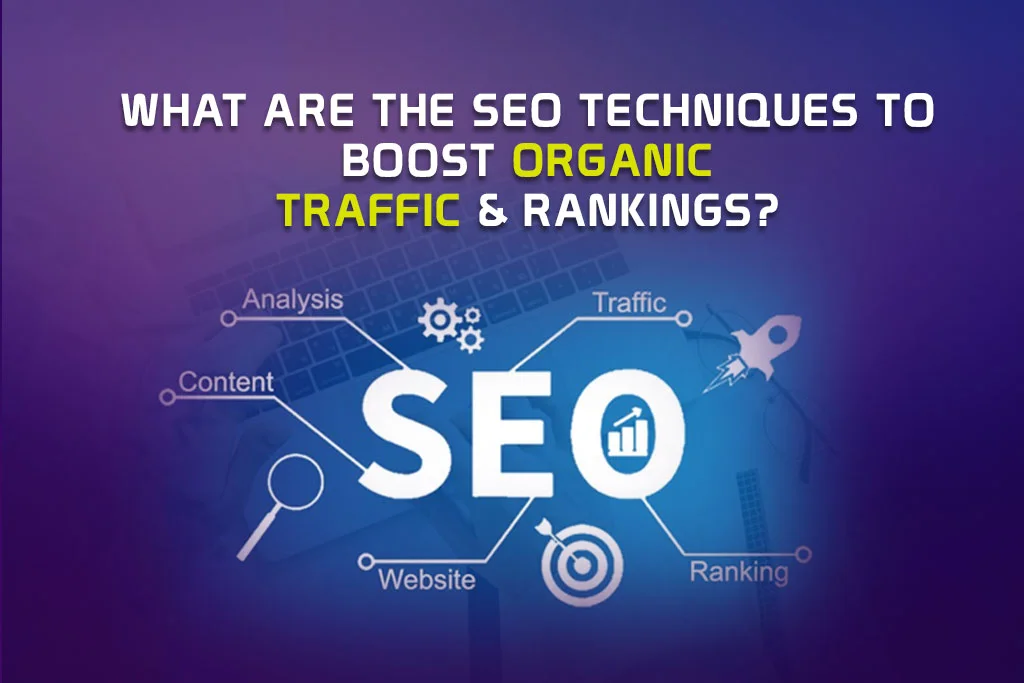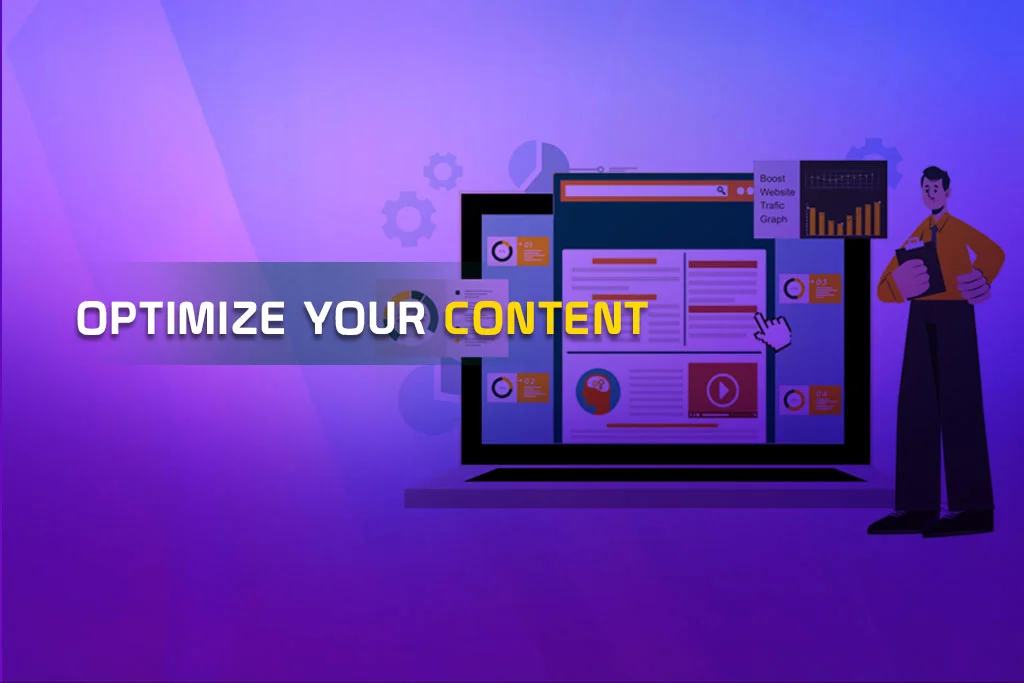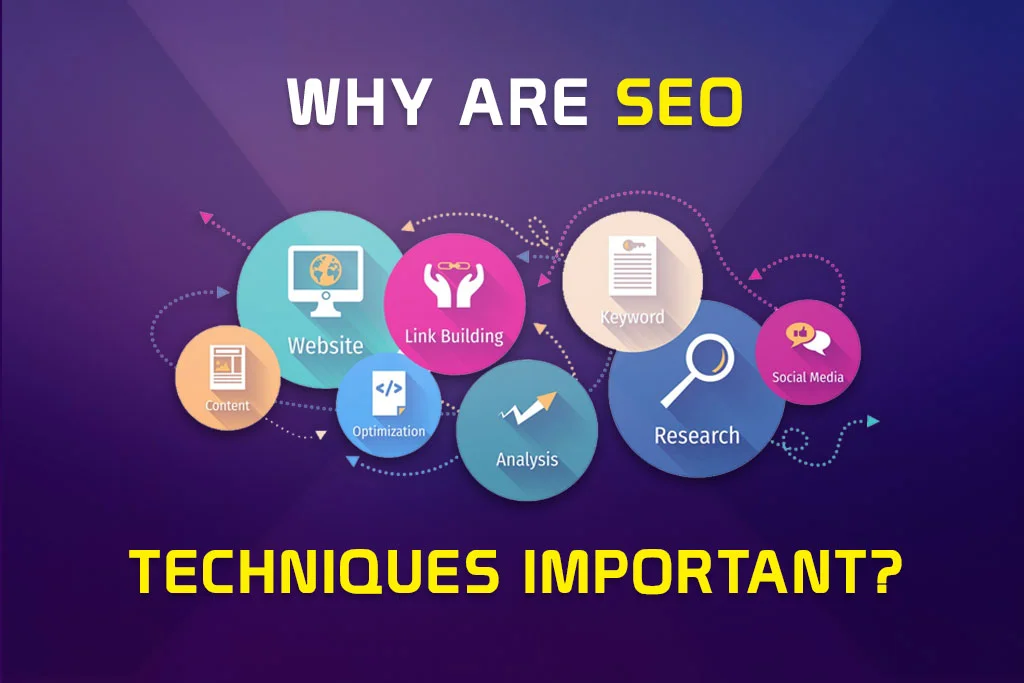SEO Techniques to Boost Organic Traffic and Rankings

Are you looking to increase organic search traffic to your website and boost your search rankings? We have got you covered here. SEO, or Search Engine Optimization, plays an important role in modern online business strategies. It helps websites rank higher on Google’s search engine results pages. It improves visibility, which leads to greater traffic. Businesses must adjust their SEO methods regularly to maintain their ranks, as Google’s algorithm is continually updated.
Businesses that apply these tactics can see huge increases in organic traffic. When you make a partnership with expert SEO consultancy services, you can boost your online presence and success. In this blog, we will talk about the SEO techniques that boost your site’s organic traffic and ranking.
SEO Techniques To Boost Organic Traffic & Rankings:
When you optimize your content for search engines, you improve its reach and importance. It increases the chances that it will appear higher in search results. This enhanced visibility may bring more organic traffic to your website, improving its overall performance and visibility online. The SEO techniques to boost organic traffic and ranking are explained below:
Study Your Competitor:
Examining your competitors’ SEO techniques might provide useful information for developing your strategy. Using tools like Semrush or Diib, you may identify their top keywords and study their backlink profiles. Consider starting with a free trial before purchasing a premium subscription. In addition, analyze their content to determine what connects with their audience. Instead of copying their approaches, use this knowledge to influence your strategy and make data-driven decisions about your SEO efforts.
Start With Keyword Research:
Keyword research and identifying search algorithms are essential to SEO success. When you target relevant keywords and optimize material for EAT, it can help to boost organic search ranks.
Target Keywords That Match Intent:
Search intent is the reason behind a user’s search. It indicates what they want to achieve. It’s important for SEO because Google promotes readability in search results. You should align your content with user intent. It is essential for ranking well, regardless of content quality.
There are four main types of search intent:
Informational:
In this type, users want to learn or find answers to questions. For example, How to bake a cake or who is the president of France.
Navigational:
Viewers want to visit a specific website or page, like Facebook login or SEMrush blog.
Transactional:
Users intend to buy something or perform an action. For example, buying an iPhone 12 or booking a flight to Paris.
Commercial:
People want to compare products or services before making a purchase decision. For example, the best gaming laptop or iPhone 14 vs, or Samsung S23.
Keyword Research Tools:
These tools evaluate search volume and competition for keywords. They offer insights for your SEO strategy. Keyword gap research looks at the context that your competitors rank for. It reveals potential growth customers.
To find high-performing keywords and analyze competition, use research tools like:
- 1. SEMrush (It is designed to help increase organic website traffic and rankings)
- 2. Ahrefs
- 3. Google Keyword Planner
Target Relevant Primary and Secondary Keywords:
Keyword research is the basis of any effective SEO campaign. If you use the relevant keywords correctly, you may create content that attracts more visitors to your website. The first step is to identify your page’s primary and secondary keywords.
Your primary keyword should be highly relevant to your business or the topic you want to cover. It typically has one of the highest search volumes. Your secondary keywords are closely related to your primary keywords and share the same context.
Optimizing On-Page Elements:
Optimizing On-page SEO techniques like titles, meta descriptions, headers, images, and snippets is important for improving search rankings and user experience. Well-optimized landing pages can rank higher in search results. It attracts more visitors and enhances user satisfaction.
Page Title Tags & Meta Descriptions:
Title tags display webpage titles in browsers and search results. It includes keywords, and writing attractive titles increases SEO, SERP rankings, and click-through rates. While meta descriptions do not directly impact rankings. It enhances CTR with concise, informative summaries under 150 characters.
Header Tags:
Header tags structure webpage content. It improves SEO and user navigation. Using them, such as keywords, and keeping them short helps search engines learn page structure and content. It shows results in higher Google rankings and more organic visitors.
Image Optimization:
Optimizing images is important for site speed and user experience. Compress, name descriptively, and add alt text with keywords to improve performance and SERP rankings. It enhances search marketing ROI.
Internal Links And Backlinks:
When you carefully combine internal and external links can significantly improve your SEO. This is one of the easiest and most powerful SEO tips.
Internal links are links that point to other pages on your site. They help you:
- 1. It boosts page authority with strategic internal links.
- 2. Optimize site structure for better user experience and search engine visibility.
- 3. It helps to enhance user engagement by providing valuable information through internal linking.
On the other hand, external links are links on your site that point to other sites. They help you:
- 1. When you create links to trusted websites, it helps to establish a reputation.
- 2. It provides value to readers with related resource links.
- 3. External linking strengthens relationships by mentioning and referring to other sites.
But you should not just add links around and hope for the best. You need to follow these best practices to use internal and external links effectively:
- 1. You should link to high-quality, relevant pages internally and externally for added value.
- 2. Try to avoid overusing the same links to maintain a natural and genuine appearance.
- 3. Use descriptive anchor text that tells readers and Google what the linked page is about.
Optimize Your Content:

Content marketing involves creating valuable content to engage your target audience. With high-quality blog posts and cornerstone content, you can grab more visitors and improve SERP rankings. It leads to increased brand awareness and sales.
Blogging:
You should regularly publish informative content with targeting keywords and providing value to your audience. Optimize your blog posts for SEO. Then, promote them on social media to attract organic traffic and improve SERP rankings.
Shareable Content:
Create shareable content to encourage social media sharing and attract backlinks. It boosts your online presence. When your engaging content connects with your audience and generates an emotional response, it increases its chances of sharing and driving organic traffic to your website.
Cornerstone Content:
Cornerstone content is lengthy content that covers vital themes. It builds your website’s authority. You need to use unique and useful cornerstone content, It helps in the optimization of core web vitals. It enhances SERP results and increases visitor traffic.
Enhance User Experience:
A great user experience boosts SERP rankings and user satisfaction. You should prioritize site speed, mobile-friendliness, and easy navigation for improved search engine visibility and engagement.
Site Speed:
When you improve your site speed, it boosts user experience and SERP rankings. You can optimize page speed by compressing images, using caching, and reducing HTTP requests. Faster-loading sites rank higher and drive better engagement and sales.
Mobile-Friendliness & Easy Navigation:
You must ensure mobile-friendliness by using responsive design and optimizing site speed for a better user experience across all devices. Its clear and easy navigation increases user satisfaction and SERP ranks.
Use Short, Descriptive URLs:
Make sure to optimize your SEO URLs is simple. Try to keep them short and descriptive. A URL serves as a webpage’s address and communicates its content to search engines. Short, descriptive URLs also enhance user experience, which in turn can positively impact your SEO.
Here are four key guidelines to follow:
- 1. Use hyphens (-) to separate words, not underscores (_), spaces, or other characters.
- 2. Stick to lowercase letters and avoid uppercase letters.
- 3. Trim unnecessary words like articles, conjunctions, prepositions, or stop words.
- 4. Include your target keyword without overloading it.
Increase Your Dwell Time:
Google now values dwell time. The duration users spend on a web page after clicking a search result, Is beneficial for the UX factor. The longer dwell times convey valuable content. It potentially boosts rankings. To improve dwell time and SEO, focus on engaging content and user experience.
Make Your Posts Easy to Read:
If you want to increase your organic rankings, you need to optimize content for readability. These formatting tips can help do that:
- 1. Write quality content
- 2. Use short paragraphs
- 3. Mix sentence lengths
- 4. Sub-headers
- 5. Bullet points
- 6. Use white space
- 7. Use images and screenshots
Staying Updated on Algorithm Changes To Search Engines:

With this ever-changing world of SEO, staying updated on the latest trends and algorithm changes is essential for maintaining high search rankings. You should stay updated on Google’s search results and algorithm changes. You need to follow trusted SEO news sources to adjust your strategy and maintain competitiveness in SERPs.
Google Algorithm Updates:
Get informed about Google’s regular algorithm updates, which occur 500-600 times per year, so you can understand their impact on your website’s search performance and adjust your strategy accordingly.
SEO News Sources:
To stay up to date on the newest SEO trends and best practices, follow respected SEO news sites like Journal, Search Engine Roundtable, and Search Engine Watch. This helps ensure your SEO strategy remains effective and adaptable to industry changes.
Optimize Core Web Vitals to provide a better experience:
A Core Web Vitals report, based on real user data. It measures elements that are important to the overall user experience on your website. Choosing a positive user experience is critical to your SEO strategy and maintains the value of your website.
It measures:
- 1. First Input Delay measures how long it takes for users to interact with your content. It is aimed at 100 milliseconds or less.
- 2. Cumulative Layout Shift tracks how much your content shifts on the page until it stabilizes. This aims for 0.1 or less.
- 3. The largest Contentful Paint measures the time. It takes for the main content to fully load. It is aimed for 2.5 seconds or less.
Adhere to Google’s E-A-T Guidelines:
According to Google, EAT is one of the top three factors for measuring page quality. It ensures that EAT submits these best practices:
- 1. It includes author profiles and relevant qualifications.
- 2. Check out high-quality backlinks and avoid spammy ones.
- 3. It ensures that the About, Contact, and Customer Service pages have accurate information.
- 4. They have qualified specialists, so they can create articles about sensitive topics.
- 5. It edits or deletes low-quality EAT content.
Leverage CTAs Throughout Your Site:
To avoid confusing the prospect, use CTAs that are suitable to their place in the sales funnel. However, each business is unique, so what works for one brand may not work for another.
Consider these five types of CTAs:
- 1. Lead generation
- 2. Content marketing
- 3. Social sharing
- 4. Subscriptions
- 5. Purchases
Why are SEO Techniques Important?

An organic SEO technique helps your website stand out from the competition. It drives beneficial growth and success in the digital age. SEO techniques are essential for boosting organic traffic and rankings. Because they improve your website’s visibility on search engine results pages. You can attract more relevant traffic to your site by using effective SEO strategies, such as optimizing keywords, improving website structure, and enhancing user experience. Higher organic traffic not only increases your chances of converting visitors into customers but also signals to search engines that your website is powerful and trustworthy. It leads to improved rankings over time.
Conclusion:
In conclusion, getting effective SEO techniques is important for boosting organic traffic. It improves search rankings. By optimizing your website, creating high-quality content, and focusing on user experience, you can attract more visitors and climb higher in search engine results. When you continuously adapt and refine your SEO strategies, it will ensure long-term success in increasing visibility and driving traffic to your website. MediaEclips is the best SEO agency in Plano, TX. If you want to use SEO services, you can easily rely on us. In case of any help, you can request a consultation call with our experts.
FAQs:
If you want to develop an SEO strategy, then start by conducting keyword research and optimizing on-page elements. It also creates high-quality content and builds authoritative backlinks.
High-quality content is important in white-hat SEO techniques. It attracts organic traffic by providing value to users, encouraging engagement, and earning backlinks. All of this helps websites rank higher in search results.
By increasing overall website usability and fulfilling user purpose, improvements in user experience quicker page loads, easy access, and mobile friendliness. It results in improved search ranks and more organic visitors.

